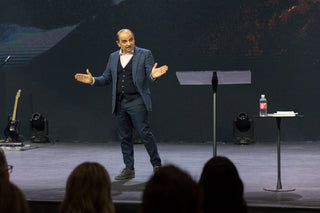Lillian Trasher spent a lifetime in Egypt, where she created one of the world’s largest orphanages with small resources but enormous faith.
Born in Florida in 1887, Lillian came to a living experience of Christ in her teens. She worked briefly at an orphanage where she found a love for children and learned how to care for them. She became engaged to a Christian minister in 1910 but, just days before the marriage, decided she was called to the mission field. When her fiancé refused to share that call, she ended the engagement.
Determined to go abroad but uncertain where, she met a pastor who had been working in Asyut, Egypt, 230 miles south of Cairo. Deciding this was where she was called to, but without any supporting mission or church, Lillian sailed to Egypt with her sister Jenny and just a dollar in her purse.
On arrival in Egypt, then a British protectorate, Lillian travelled to Asyut where the mission was based. Still settling in, she encountered a dying woman with a malnourished baby. The woman died and Lillian realised that the unwanted baby was in danger of being thrown into the Nile. She took the child and began caring for it. Her action was greeted with disapproval by the mission director and she was ordered to take the baby back to the village. Lillian refused and instead rented a small house where she set up a home for herself and the baby. Soon more orphans were brought to her. Some were due to the death of their mothers, but others had been rejected because they were the result of rape, immorality or prostitution.
Lillian’s work multiplied and in 1916 she bought land and built new buildings. Although supported by the local community, she always needed to pray for food for her children. By 1918 her orphanage family had grown to fifty children and eight widows.
Unrest at the end of the First World War meant foreigners were ordered out of the country for their safety. Lillian handed her orphanage over to local Christians and returned to the States. There, she joined the Assemblies of God who from then on helped to support the orphanage. She returned to Egypt in 1920.
Education was an important aspect of the orphanage, with all the children taught English and Arabic as well as crafts. Where possible, the children were also encouraged to continue to college. The orphanage practised a vibrant Christian faith and children were encouraged to follow Christ. In 1927 an extraordinary revival burst out amongst the children which overflowed into the local community. Many of the children became passionate Christians, with a number becoming pastors.
The orphanage continued to grow and at one point there were 1,400 orphans in what had become a small village; it was the largest orphanage in the world. The orphanage continued through both the Second World War and the troubles surrounding Egyptian independence.
Nicknamed the ‘Mother of the Nile’, Lillian Trasher continued with her work until her death at the age of seventy-four in 1961. She was buried in the orphanage which, bearing her name, continues its work today with 400 orphans, forty widows and fifty staff.
The story of Lillian Trasher and her orphanage is truly remarkable. During her fifty-year ministry 25,000 children came under her care. She faced endless challenges and problems. Her diary records day after day when there was no obvious source of money, food or clothing. Her work flourished despite epidemics of cholera and polio, fires, riots, two world wars and the challenge of being a Christian organisation in a Muslim majority country. Yet Lilian pressed on, constantly bringing everything to God in prayer.
Perhaps the most remarkable answer to her prayers happened during the Second World War. Amid nationwide shortages, Lillian called for twenty-four hours of prayer and fasting. During this time, she had an urgent message to visit the American ambassador in Cairo. He explained that, with the fall of Greece to the Nazis, a Red Cross supply ship had returned to Alexandria where it had offloaded its cargo of food, blankets and children’s clothes. Did she want them?
Along with George Müller a century earlier, Lillian Trasher stands out as one of those giants who created and successfully managed big orphanages. Let me suggest three things to think about.
First, Lillian loved the least. The children she rescued were, in the world’s eyes, the weakest and the most insignificant of creatures, to the point of being disposable. But in imitation of the God who became one of us, Lilian put herself alongside the unwanted.
Second, Lillian laboured for the least. She was a woman of outstanding faith, but she was also noted for her energy, boldness and persistence. She travelled the countryside seeking donors, petitioning the powerful and wealthy for money and assistance. And at the orphanage she worked tirelessly at cooking, sewing, teaching and caring. Never taking a holiday, Lillian lived for her orphaned children.
Finally, Lillian leaned on God for the least. If Lillian gave everything she had into her work for the orphans, she never presumed that she could do it all herself. Daily, she threw herself on the mercy of God, trusting him to supply her many needs. A measure of her faith is the way she stepped out in initiatives without obvious support. Lillian made the almost reckless promise that ‘no child would ever be turned away’. No child was: God always provided.
The life of Lillian Trasher and her astonishing work amongst orphans shows the working together of divine grace and human effort. She did everything she could, and in what she couldn’t do, she turned to God. In every venture, great or small, that’s a good principle.
J.John
Reverend Canon




